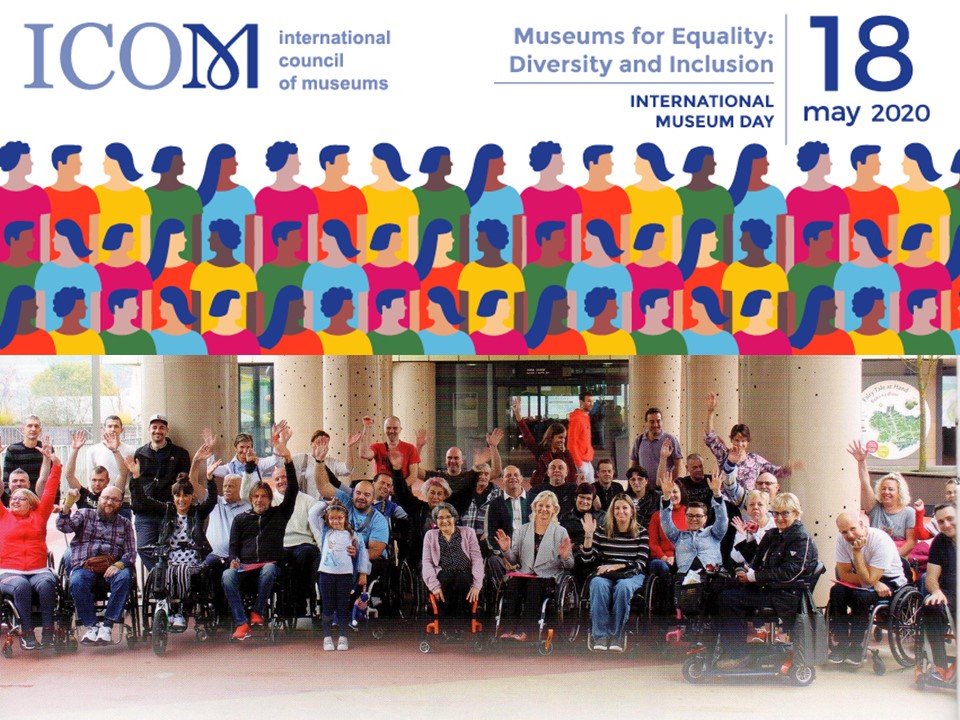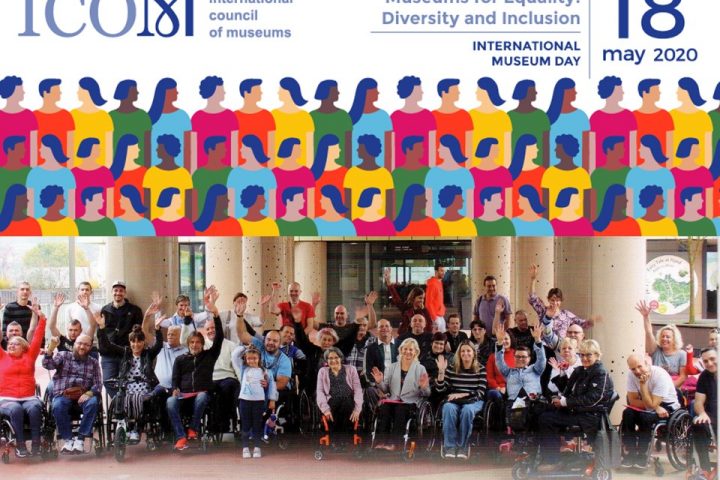IHMMF and HUPT together for inclusion!

On the International Museum Day on May 18, 2020, as part of the event MUSEUMS FOR EQUALITY: DIVERSITY AND INCLUSION, the Croatian Museum of Medicine and Pharmacy brings an interview with Manda Knežević, activist and former president of the Croatian Association of Paraplegics and Tetraplegics, about opportunities for cooperation and providing a better understanding of this vulnerable social group which, through its own work in associations, exceptional commitment and quality projects, has already made significant progress towards achieving equality and inclusiveness.
HMMF: Please briefly introduce our visitors to yourself, your association, its goals and achievements so far.
MK: I am Manda Knežević, a decades-old activist for the rights of persons with disabilities, and now a former president of the Croatian Association of Paraplegics and Tetraplegics (HUPT). I have always particularly emphasized the needs of people with the consequences of spinal injuries whose disability arises in an instant and thus changes their lives fundamentally. These are about a hundred people who suffer a spinal cord injury every year and who, as a rule, can only move with the help of wheelchairs, either hand-operated or electromotor-powered. If there is no support quickly after their suffering, that is, if there is no adequate rehabilitation and social support, such persons are in a way prevented by the community from reintegrating into the life of the community after rehabilitation. My aspirations have been and still are: to achieve the advancement of rehabilitation that will include all forms: from medical, psycho-social to professional. Furthermore, provide support in the community so that people who need services in everyday life (from personal hygiene to wearing clothes, etc.) can get it and that, regardless of family relationships, they have a chance to enter the labor market and live as independently as possible. Of course, there is a constant commitment to accessibility and support for new victims to make life easier after a car accident, diving, fall or spinal disease…
HMMF: What do you think about this year’s International Museum Day program Museums for Equality: Diversity and Inclusion and how do you think museums can contribute even more to achieving equality and inclusion for all social groups?
MK: As the members of HUPT are mostly people who are mobile exclusively with the help of wheelchairs, I don’t need to mention that accessibility is very important to us, both when entering the space and in the space itself, and in equipment, as well as accessibility environment. We do not want to exclude any other group of people with disabilities, such as deaf people, blind and partially sighted people, people with limited mobility or with or without mobility aids. The need for accessibility is essential at all stages of life, from birth to death. From maternity and health care institutions, educational, cultural institutions through institutions where social and sports facilities take place to community services and units, local governments and self-governments and those at the state level. For years, the problems of accessibility of cultural institutions have been pointed out, especially the museum spaces that are often located in buildings that are cultural monuments.
The motto of this year’s International Museum Day, Museums for Equality: Diversity and Inclusion, shows that diversity and inclusion are indeed a challenge to which due attention must be paid. When it comes to museums, all segments should be taken into account, made accessible to people with disabilities as visitors, whether locals or tourists, as employees and creators, or at least co-creators of content. Persons with disabilities should certainly be included in development plans, and it is obligatory to refer to, for example, the Act on Ratification of the Convention on the Rights of Persons with Disabilities, the EU Strategy for Persons with Disabilities 2010-2020 and the Equalization of Opportunities for Persons with Disabilities 2017 by 2020.
HMMF: What do you expect from the cooperation with the Croatian Museum of Medicine and Pharmacy now, in a virtual environment, and in the future when the Museum opens to the public?
MK: First of all, I want to thank your museum, which was the only one to contact us, because you obviously took seriously the motto of this year’s International Museum Day – Museums for Equality: Diversity and Inclusion. Cooperation with the Croatian Museum of Medicine and Pharmacy is now possible in a virtual environment with digital technology and is an opportunity to enable many interested people to see museum collections and the occasional exhibitions with a more creative approach. It would be convenient to collect material on the beginnings of health care for people with disabilities, approaches to their treatment, development of aids and the like.
Dear virtual visitors, are you interested in this topic? Do you want to know how you can get involved and help?
Visit the websites of the Croatian Associations of Paraplegics and Tetraplegics (HUPT) and the Association of Spinal Injuries Zagreb (SOZ) and view descriptions of their projects, complete issues of magazines, information and educational brochures, as well as many photos and useful information: https://hupt.hr, https://www.soz.hr


